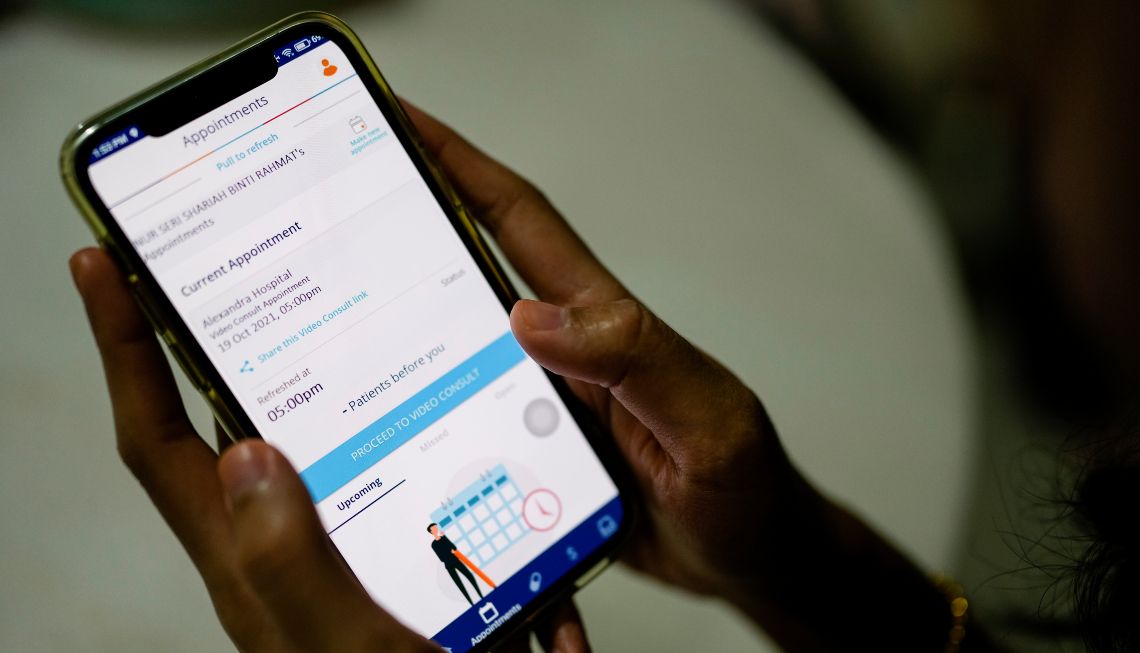How an app is making teleheath more convenient
By Sean Nolan
The OneNUHS app has combined services into one platform for easier use.

Over the course of the Covid-19 pandemic, telehealth is being relied upon to take healthcare beyond the four walls of the hospital. Cutting down transport time and reducing the number of patients waiting in hospital clinics provides greater convenience for patients like Seri.
Singapore’s National University Health System (NUHS) integrated video call capabilities into its existing health app. Leaders from NUHS, including Group Chief Digital Officer Peter Forbes, discuss the benefits of this innovation.
Calling for more convenience
The new feature integrates the Zoom platform into NUHS’s existing app. Zoom was chosen as it was already being used within NUHS and many patients are familiar with how it works, says Forbes.
Patients will no longer have to change between platforms in order to receive care, thanks to this integration. They will be able to schedule their appointment, speak with their doctor and then arrange for the necessary medications all within the OneNUHS app.
This feature allows patients to see a digital queue number, making them aware of how long they will have to wait till their doctor is available. It is also connected to the hospital’s data systems, so appointments and medical records are updated in near-real time.
Reducing travel is another key benefit. NUHS looks to “save patients the trouble of travelling physically to the hospital, especially for elderly patients”, says Clara Sin, Chief Operating Officer, Group Service Transformation & Medical Records, NUHS.
Having a convenient way to consult with doctors over video call also “reduces the crowd in the clinics and allows us to maintain better safe distancing measures”, Sin highlights.
Elderly patients will be able to share the link to the video consultation with their caregivers through the app. This will help elderly patients receive support from family and friends while keeping these groups in the loop, says Forbes.
NUHS appointed digital ambassadors in its clinics to help patients who are less experienced with technology set up the app. While technology is often associated with the younger generations, elderly patients already report that the new tool is convenient, he continues.
The new feature was co-created by NUHS and IHiS, Singapore’s health information agency. Public healthcare has seen a dramatic rise in video consultations, as they increased by about 30-fold over the last 18 months, says Alan Goh, Assistant Chief Executive, Platform Services, and Chief of HealthHub, IHiS.
Other features like fingerprint scans and facial recognition are also integrated in the app to boost security and user experience, says Goh. Looking to the future, these features will be made available for more public healthcare apps, he shares.

The app’s tech foundations
Cloud and data play a key role in the app’s development and improvement. The OneNUHS app is built on a hybrid cloud model, with some elements on the cloud, while sensitive patient data is kept on premises, says Forbes.
The key benefit of the cloud is that digital systems can be created without having to wait for physical IT infrastructure, like data centres, to be constructed. It is also convenient to develop and host digital tools, like the app’s AI chatbot, on the cloud, he shares.
Data analytics allow NUHS to track how popular certain features on the app are, allowing them to ensure the app is working as intended. This user feedback informs the team how the app can be improved moving forward, Forbes highlights.
Changing the work of healthcare staff
The app’s new feature changes the way that patients interact with the healthcare organisation, leading to new ways of working for staff, Forbes identifies. The app allows patients to schedule appointments digitally, meaning they won’t need to call hospital staff to arrange the details, he gives as one example.
Empowering patients to “self-serve” through the app means that healthcare staff will spend less time on “transactional” duties. This will give them more opportunity to focus on higher value work, he expects.
Telehealth services reduce patients’ transport requirements, eases queues at clinics and makes care more convenient for the elderly. Technology is enabling healthcare providers to provide the same quality of care in innovative ways, reducing strain on patients and staff.
Images courtesy of NUHS.
